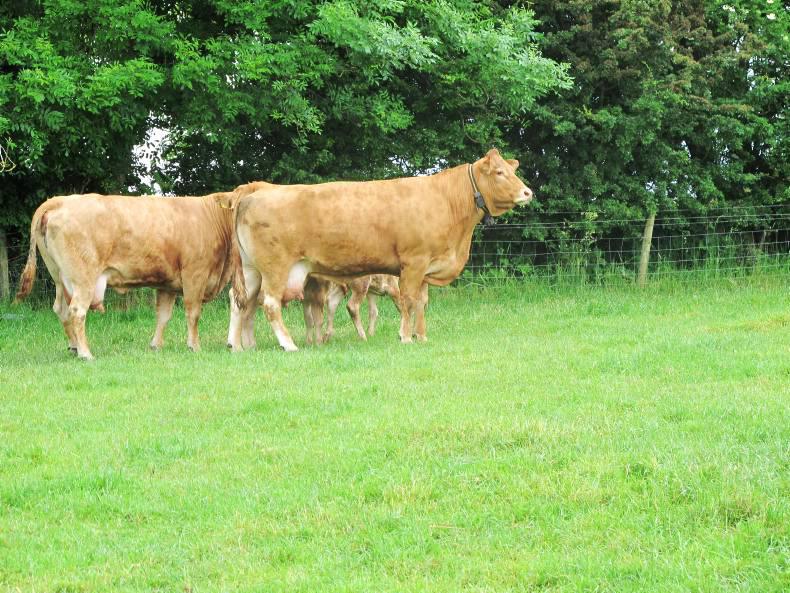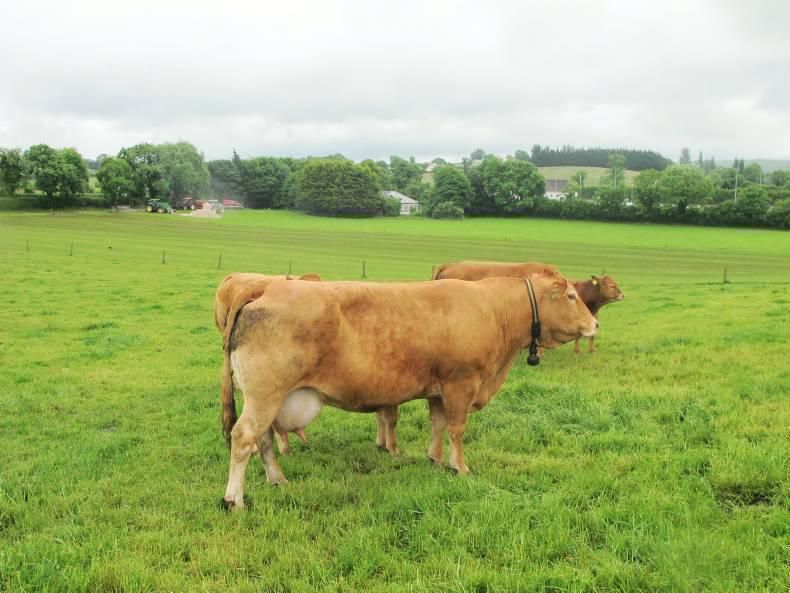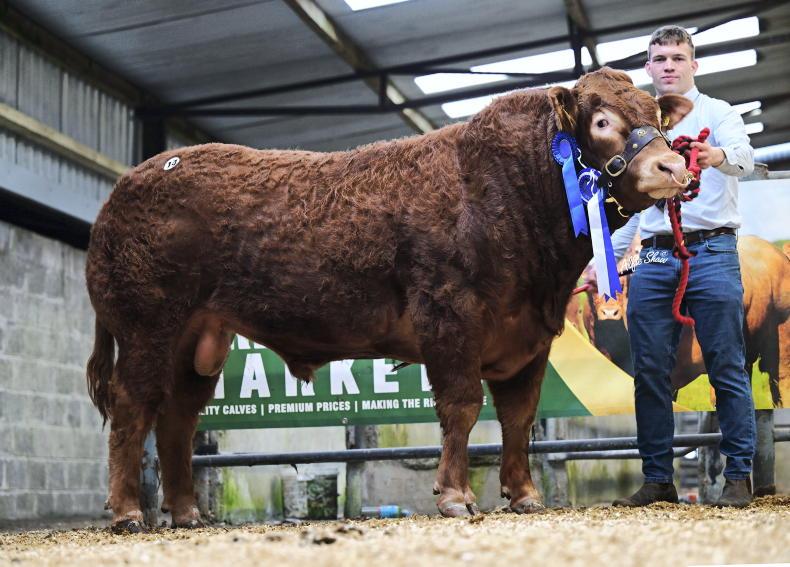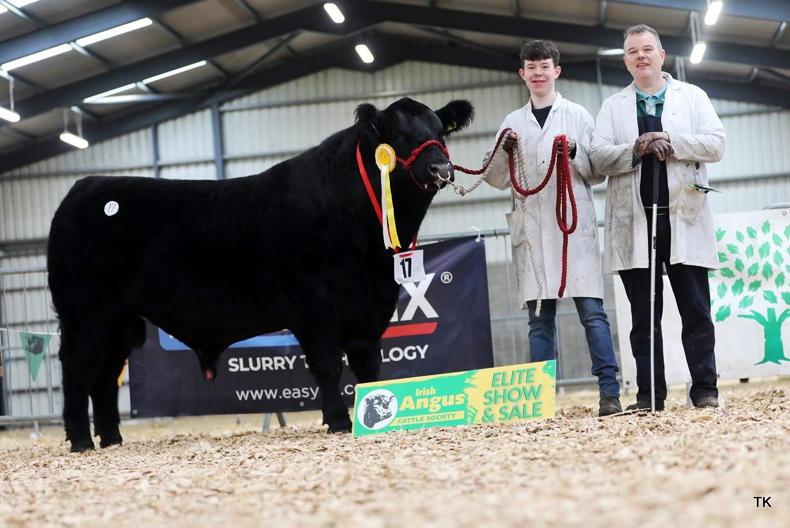You’d be forgiven for looking twice at Dermot Rowe’s pedigree Limousin cows.
The quality and style of Dermot’s stock is initially striking, but on closer inspection it soon becomes clear that this is no ordinary farm.
Dermot has embraced technology and fitted his cows with heat detection collars.
“I dabbled with tail paint and patches in the past, but I just doubted their effectiveness. What the system gives me is peace of mind. Given both the cost of the AI straws I’m using and the value of the potential calf it produces, I need to be as sure as possible that all is right when I’m serving a cow,” he said.
The 50-cow herd resides at Lobinstown, just outside Slane, Co Meath. As well as his pedigree herd, Dermot keeps a sheep flock, which he credits for his pristine grass swards.
Dermot has 35 collars at present. Data from the collars is beamed to an antenna in the yard every 10 minutes. The system has a range just shy of one kilometre and all the paddocks on Dermot’s home block are within operating distance of the antenna.

A user-friendly terminal in Dermot’s yard interprets the data and alerts him to any potential cows in heat. Alerts are based on the animal’s activity and Dermot adheres to the AM-PM rule when inseminating cows. This means that a cow flagged as bulling in the morning is served that evening, while those showing activity in the evening are served the following morning.
The Limousin breed may not have the best reputation in terms of temperament, but Dermot successfully operates an AI-based breeding regime, on his own, with relative ease. And there are no 10ft walls or Jurassic Park fences in sight. When I visited the farm, the stock were oblivious to us as we walked through them.
“I’ve been commended on the docility of my stock in the past. I think it’s an important trait and it’s unfair that people paint all Limousins with the same brush. I’m on my own while Diarmuid (Dermot’s son) is away at college, which is most of the year. Like all cows, they’re easily upset at calving time, but there are no issues at other times.”

The system is not cheap. The terminal and antenna come up just short of €4,000 and the collars cost €100 to €110 apiece. I questioned Dermot as to the possibility of using the system in a commercial suckler enterprise and, as expected, he was sceptical.
“I struggle to see its viability. Even if it’s written off over a number of years, the collar’s lifespan is around seven years, so it needs constant reinvestment. In my game, having 24/7 heat detection is invaluable. The pedigree cow is harder to get in calf and often has less obvious heats. What my animals are worth at sale time makes it viable for me.”
Dermot was displeased by the Irish Farmers Journal’s reporting on rouge pedigree breeders last week.
“I felt we were all tarnished with the same brush. Look around you, there are no Friesian cows or creep feeders here. I sold a group of bulls last year and all were five stars, except one who’d been born via a C-section. He was one star because of my accurate recording. When people come to buy animals from me, they can be assured my data recording is accurate. Your reputation is vital in this game. None of my bulls go through the mart ring and I don’t advertise – they’re all bought straight from the farm.
“Pedigree breeders’ names shouldn’t be blackened because of the actions of a small minority,” he concluded.













SHARING OPTIONS